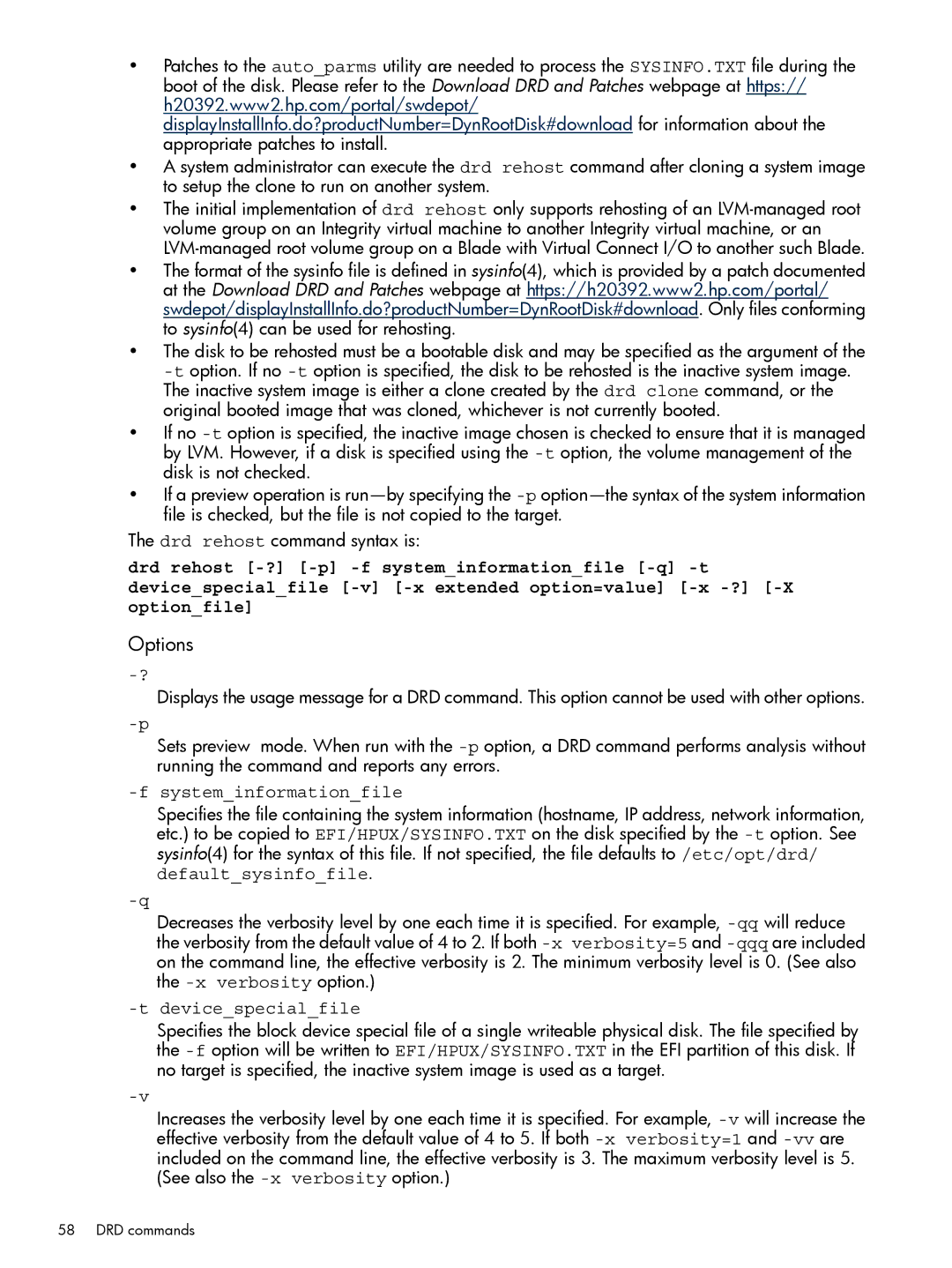•Patches to the auto_parms utility are needed to process the SYSINFO.TXT file during the boot of the disk. Please refer to the Download DRD and Patches webpage at https:// h20392.www2.hp.com/portal/swdepot/ displayInstallInfo.do?productNumber=DynRootDisk#download for information about the appropriate patches to install.
•A system administrator can execute the drd rehost command after cloning a system image to setup the clone to run on another system.
•The initial implementation of drd rehost only supports rehosting of an
•The format of the sysinfo file is defined in sysinfo(4), which is provided by a patch documented at the Download DRD and Patches webpage at https://h20392.www2.hp.com/portal/ swdepot/displayInstallInfo.do?productNumber=DynRootDisk#download. Only files conforming to sysinfo(4) can be used for rehosting.
•The disk to be rehosted must be a bootable disk and may be specified as the argument of the
•If no
•If a preview operation is
The drd rehost command syntax is:
drd rehost
device_special_file [-v] [-x extended option=value] [-x -?] [-X option_file]
Options
Displays the usage message for a DRD command. This option cannot be used with other options.
Sets preview mode. When run with the
-f system_information_file
Specifies the file containing the system information (hostname, IP address, network information, etc.) to be copied to EFI/HPUX/SYSINFO.TXT on the disk specified by the
Decreases the verbosity level by one each time it is specified. For example,
-t device_special_file
Specifies the block device special file of a single writeable physical disk. The file specified by the
Increases the verbosity level by one each time it is specified. For example,
58 DRD commands
